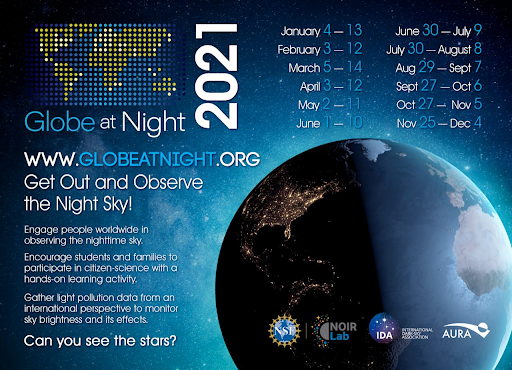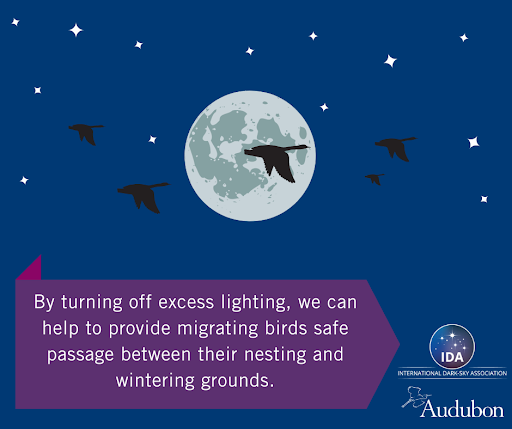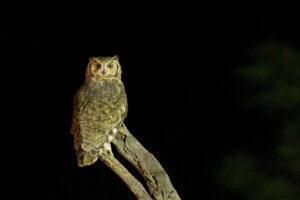
The conjunction of two citizen science campaigns this February provides food for thought in our community. First, from February 3–12, comes the monthly Globe at Night project — an initiative that makes gathering sky quality and light pollution data an activity in which you can participate. The premise is simple: go out after dark, let your eyes adjust to the darkness, and look to see how many stars are visible in the constellation Orion. Comparing your observations with Globe at Night’s sky quality charts, it’s simple to determine how much light pollution you’re experiencing. Almost 30,000 data points were added to the online database last year, but only one was in the Geneva Lake area. Let’s put our community on the map this year!
Beginning at the end of this campaign is the second project, a long-time favorite of mine: The Great Backyard Bird Count. From February 12–15, instead of counting stars, we’re counting birds: specifically, how many of which species of birds we see in small areas in a given length of time. These data give scientists invaluable insights into bird migration patterns, overall species health, and habitat conditions. Our community has a somewhat better track record with this project, especially in natural areas — so let’s not lose our momentum in 2021. 15 minutes is all it takes!
How do these projects relate, other than sharing the date of 2/12? They coincide in more ways than one might think. Dark night skies are essential for up to 60% of birds, who migrate at night and rely on the stars to help them navigate. Not only that, but birds are attracted to lit locations, leading to collisions with buildings, which kill an estimated 5 million birds each year. As migration routes are disrupted, longer paths and unhealthy stopover habitat — as birds seek food in these bright cities instead of in forests and prairies — put still more strain on our avian friends.


Taken together with the effects of artificial lighting on the insects these birds feed upon, light pollution is a very significant contributor to dwindling bird populations and threatened extinctions.
Let’s come together this year for skies and for birds — by participating in these citizen science campaigns, by turning off our outdoor lighting when possible, and by shielding our lighting when we cannot remove it. The better we can learn to share our natural world, the healthier and happier our entire ecosystem — including we humans — can be.
And who knows? Perhaps, as we gaze into Orion on the night of February 12th, the moving call of a Great Horned Owl will remind just how close the birds and the stars can be.
